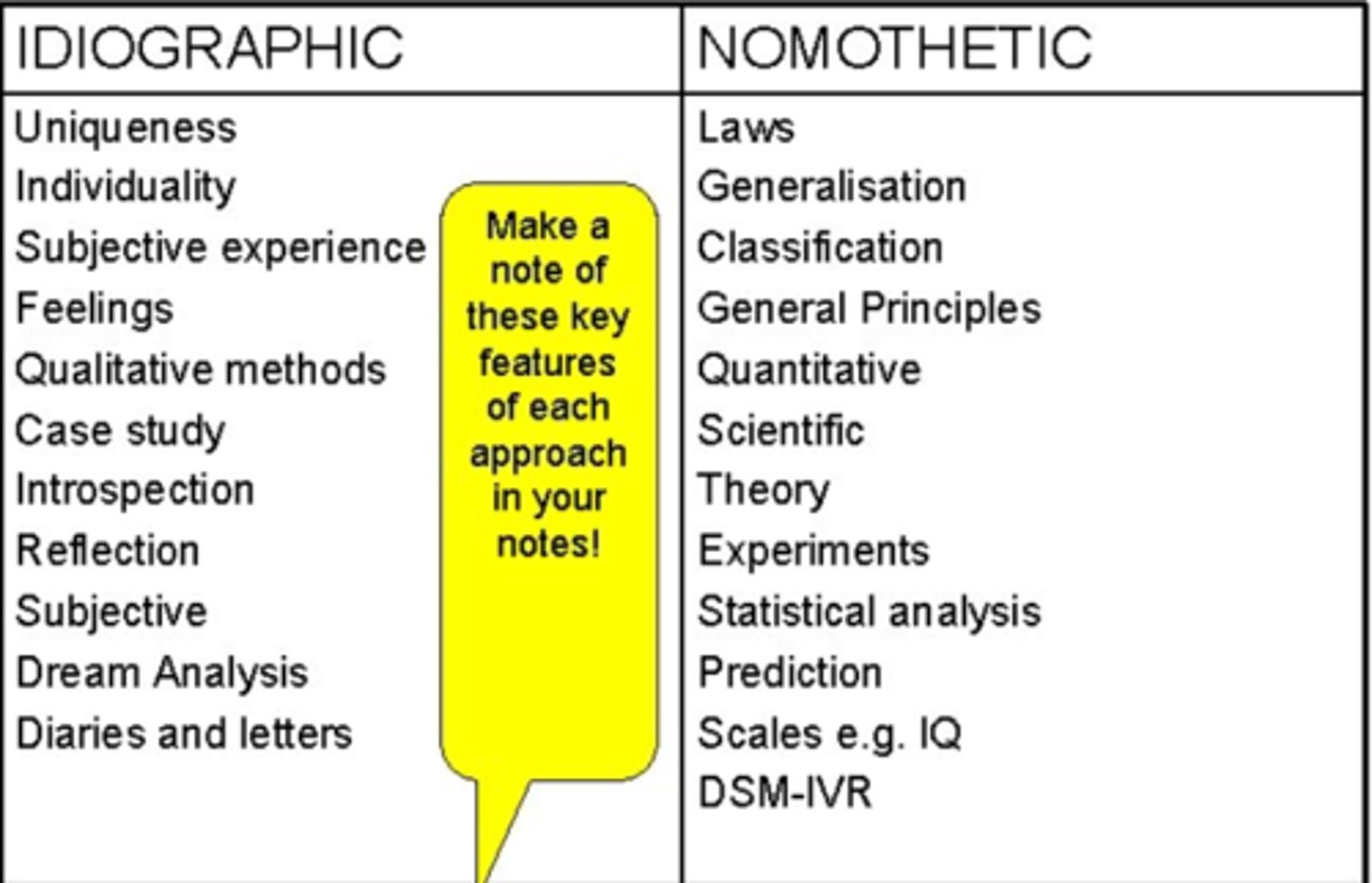I&D 07: Idiographic & nomothetic (b) A03
1/4
There's no tags or description
Looks like no tags are added yet.
Name | Mastery | Learn | Test | Matching | Spaced |
|---|
No study sessions yet.
5 Terms
Explain how the use of quantitative (3) and experimental (1) methods makes the nomothetic approach scientific.
Use of quantitative methods
•+ statistical analysis
•+ large samples
•=> measure strength of relationships between variables
Use of experimental methods
•=> identify causal relationships
Explain how the use of qualitative and case study methods makes the idiographic approach unscientific. (3+2)
Use of qualitative methods
•=> open to interpretation
•=> open to researcher bias
•=> harder to replicate
Use of case studies
•=> unrepresentative
•=> ungeneralisable
Explain why critics argue that the nomothetic approach ‘loses the whole person’ (4)
* Lack of detail on individuals from each method
* Limited range of methods
=> fails to fully capture all aspects of the individual
=> misses complex interaction of variables
Explain why the use of qualitative and case study methods in the idiographic approach obtains more meaningful / rich / in- depth information, thus capturing ‘the whole person’ (2+2)
Use of qualitative methods
=> explore inner world of participant
=> i.e., from their subjective perspective
Use of case study method
=> involves variety of methods
=> detailed data on participant
Explain how the idiographic approach can contribute to the nomothetic approach by enhancing (i) testing and (ii) generation of theories. (2x3)
Enhance testing of theories
* Some case studies are natural experiments
* => appropriate test cases for general laws
Enhance generation of theories
* Exploration of examples can provide ideas for large scale studies
* Can identify key variables / hypotheses likely to apply to others
